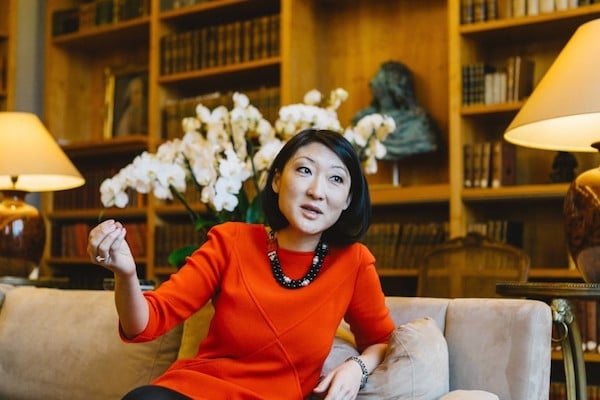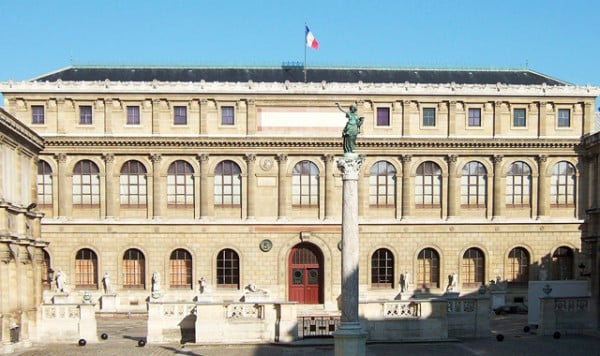People
The Art World Weighs In on Nicolas Bourriaud’s Dismissal
It all leads back to the 2013 scandal.

It all leads back to the 2013 scandal.

Hili Perlson

When French minister of culture Fleur Pellerin announced to Nicolas Bourriaud that he is to be relieved from his position as the director of the Beaux-Arts, Bourriaud publicly accused Pellerin of not being able to produce a “single factual argument” for her decision.
It wasn’t until days later, at a press conference for the opening of the photography festival in Arles, that Pellerin relayed, publicly, what she perceived to be Bourriaud’s shortcomings that necessitated his dismissal.
Not quite factual still, her criticism sounded more like snide remarks. “A high profile curator is not necessarily a good director,” she said.
She also argued that Bourriaud has not established “a project for the academy after four years in office”—a claim that he immediately challenged—and made indirect accusations by stating that she is seeking “a director for the Fine Arts Academy that is really there, and not absorbed by his personal projects […] a man of vision that puts the school before personal interests and tastes.”
Pellerin went on to deny the rumors which claim that the position has been promised to Eric de Chassey, a close friend of Julie Gayet, who is the French President Francois Hollande’s lover.
In a new press release, according to Le Monde, Pellerin announced that the deadline for applications for the position has been pushed back from July 21 to August 24. Eligible candidates will be heard in September by a panel of qualified experts, among them Alfred Pacquement, former director of the National Museum of Modern Art, and Marie-Claude Beaud, who currently leads the New National Museum of Monaco.

French culture minister Fleur Pellerin.
Photo: Courtesy of Jens Gyarmaty via FAZ.
In an open letter to Fleur Pellerin, penned by Galleria Continua’s Lorenzo Fiaschi in agreement with co-founders Mario Cristiani and Maurizio Rigillo, Fiaschi expresses the bewilderment that was felt by many in the art world. He writes:
[…] I cannot understand, given the content of your pronouncements, that a man like Nicolas Bourriand, who embodies for the whole world an intellectual and innovative France of the highest order, could be removed from his post without any further form of procedure.
[…] Why then this waste, why such an incoherent decision?
[…] After reading your statement, the decision to remove the director of the ENSBA appears to me even more senseless.
Reading you, one would say that Nicolas Bourriaud is exactly the person needed to meet your stated objectives. His political leadership and strategy is thoroughly considered, the actions he has already put in place could not be more concrete and are undeniably in line with your desired direction.
He then goes on to cite Bouriaud’s achievements for the academy, which include the modernization of the institution and its infrastructure, the reorganization of the school’s governance, and its diversification, among others.
But the French press has taken a closer look at Bourriaud’s tenure at the Beaux-Arts. According to research conducted by Telerama, Pellerin’s reproach may not be entirely unfounded.
The crux of the matter seems to lead back to the controversy that errupted in 2013, when faculty and students wrote to the minister of culture at the time, Aurélie Filippetti, voicing their disagreement with the star curator’s tenure. At the time, as today, Bourriaud had many high-profile supporters, and the case seemed to be resolved.

École nationale superieure des Beaux-Arts, Paris.
Photo: Courtesy of Hermann Wendler.
During the 2013 crisis, the students who had signed a petition against Bourriaud had pointed to a lack of dialogue and problems with school facilities. Bourriaud came under fire for renting out spaces for a private dinner for Ralph Lauren, an event which left some students without studios for a few days.
Proceeds from the event served to finance new multimedia equipment, but the students and some professors had particularly criticized the choice of this investment, pointing to some urgently needed repairs to the building itself, and accusing the director of “improving the facade but not quality of life.”
Regarding the academy’s reach abroad, Pellerin confirmed that there have been discussions with numerous international schools, including schools in Japan, Reijkavik, and Buenos Aires, but no new agreements have been signed. “The Moroccan authorities have called me to complain about not seeing projects moving forward,” Pellerin said, regarding the planned establishment of an office in Rabat, which seems to be lagging.
Another point of criticism was that the school doesn’t separate itself enough from the art market. This too goes back to the 2013 scandal, where Bourriaud was criticized for showcasing artists as part of Paris’s collectors’ weekend CHOICES, as it was seen by some as using the school to serve the art market’s interests.
Bourriaud was criticized for “coaching” students to become “art stars” in close relationship with the market. Back in 2014, the critics Moisdon Stephanie and Eric Troncy, in a letter to Aurélie Filippetti, pointed out that it is anachronistic and unrealistic to ignore the fact that students need the art market.
Meanwhile, the voices supporting Bourriaud have gotten louder. But it is the students’ protest that should matter most.
“The reaction at the school was quite unanimous, even if teachers or members of the administration are rather discreet: everyone opposes the arbitrary conditions of appointment,” says Charlotte Novaresio, elected delegate of students this year. “For the good of the school, we want to prevent people from being parachuted without consultation with education stakeholders, who are the first affected.”